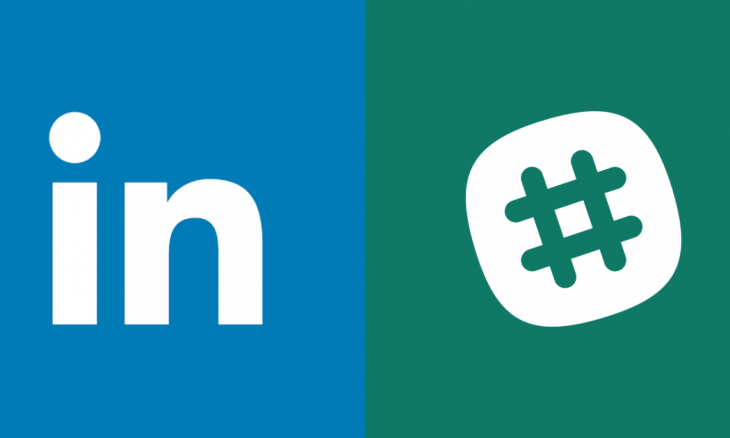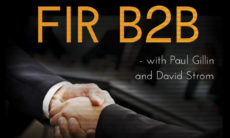If you’ve checked out your LinkedIn groups lately, you may notice that LinkedIn groups are not what they used to be.
As much as I had hoped that LinkedIn’s changes to groups would have a positive effect, not much has changed in the user experience. LinkedIn is no longer prioritizing its investment in LinkedIn groups and has even closed down the LinkedIn Group Moderators Community, a nail in the coffin for many LinkedIn group managers and owners.
What has not changed? Professionals still want to share ideas, have discussions, and network with each other inside communities.
And, that’s where Slack is capitalizing on the opportunity, that opening in the niche social media market that no other channel has filled.
INTRODUCTION TO SLACK
Slack calls itself a messaging app for teams to make their working lives simpler, more pleasant, and more productive. Sound like a social channel? A replacement for email? Or, simply an instant messaging app?
Slack is all of those, and more. Slack is a hybrid of instant messaging, social media, and Skype.
Slack may go to market with one strategy: be less busy by helping teams cut down on email. But how its users choose to use the tool could differ from its creator’s original intent. That’s the beauty of a well-designed tool, one that has the power to disrupt the industry.
THE OPPORTUNITY
Not only are professionals using Slack to engage with their teams at work, they are also open to joining other Slack communities to join.
And, here’s the opportunity for savvy companies willing to experiment with alternate ways to connect with professionals. According to Slack, 77 of the Fortune 100 companies now use Slack. Your target audience may already be on Slack because it’s already the go-to platform for startups and remote workers, and it’s becoming more mainstream for working professionals.
Because your audience likely is already on Slack, you minimize the switching cost for potential community members. There’s no need to add yet another social channel to their bookmarks bar. They simply engage with your community in Slack. Unless your audience does social media for a living, they enjoy using only one major social network or hub. Slack is a hybrid. It’s not technically a social channel, but it’s not all-work-no-play either.
HOW SLACK IS DIFFERENT FROM LINKEDIN GROUPS
COOL FACTOR. It’s a hip tool to use. We may be a bit ashamed about our Facebook addictions, but using Slack is considered to be a productivity-booster. It is not yet attached to those “social media shaming” connotations.
TARGET AUDIENCE. If your target audience is within the technology or startups world, they are already on Slack. There would be no switching cost. Users could easily just add your team (i.e. community/group) to their Slack apps. If your users are barely on LinkedIn, then don’t try Slack. They will most likely not be ready for Slack until it goes mainstream.
CHATTER. The tool is not intended to be a link-sharing tool, as opposed to LinkedIn groups, which feel like newsfeeds. It has the feel of a forum and group messaging tool.
SEARCH BAR. Everything within Slack is searchable—files, links, conversations, hashtags, keywords. No more scrolling through LinkedIn groups to try to find something of interest to discuss.
CHANNELS. You can separate conversations within a community by topic and private channels. For example, a social media marketer may join a sales and marketing group, but that person can opt-in to only the channels of interest vs. every single topic.
DIRECT MESSAGING. There is unlimited direct messaging between members in a Slack community, unlike LinkedIn’s limitation of 15 direct messages per month.
BETTER MOBILE APP. The Slack app is slick and integrates well with every device and works well on every operating system. LinkedIn’s groups app is very clunky and only available on iOS.
CUSTOMIZABLE NOTIFICATIONS. Members can be notified when and how they want to be notified about a community’s activity. No unnecessary emails filled with discussions that are not of interest, like LinkedIn. This is one of my personal favorite features.
HOW SLACK IS SIMILAR TO LINKEDIN GROUPS
LINK SHARING. Members can share links in both Slack and LinkedIn Groups. Members tend to use LinkedIn groups as a social sharing platform, but Slack is geared towards actual engagement (not link-sharing).
DISCUSSIONS. Members can engage in discussions around topics, though it’s much easier to do on Slack than LinkedIn. LinkedIn simply groups comments differently than Slack.
ONE-ON-ONE CONNECTION. Members are able to make connections with other group members. On LinkedIn, they can become “officially” connected, but it’s much more casual inside Slack. No official connection requests are sent. Members engage with whom they want, unrestricted.
Stay tuned for Part 2 of this article next month!





